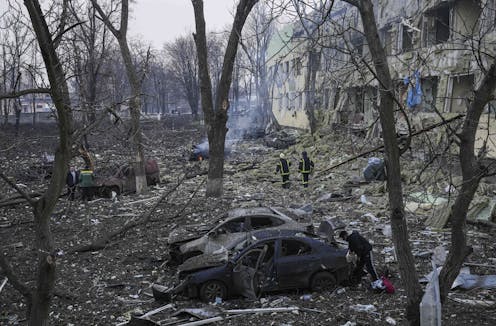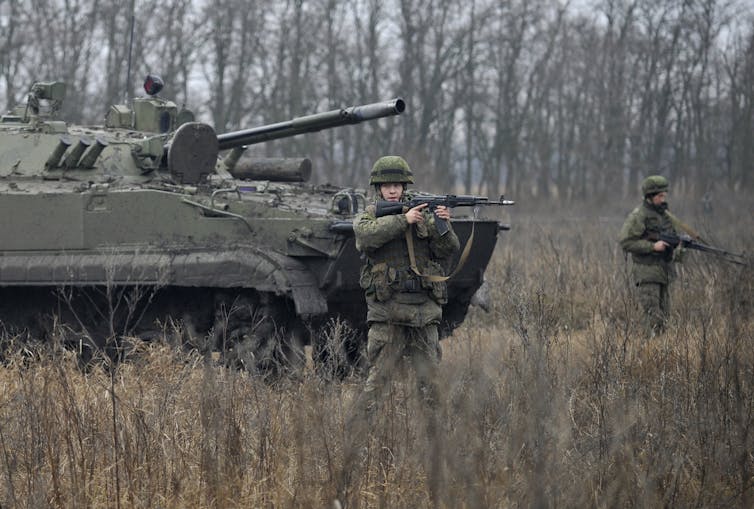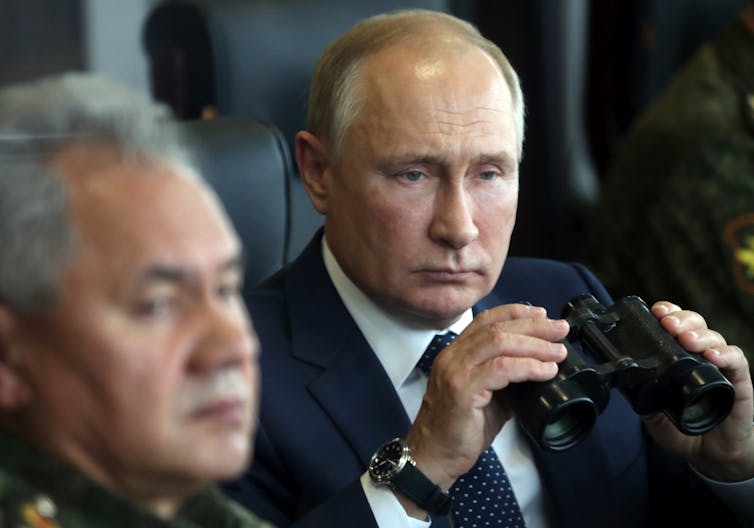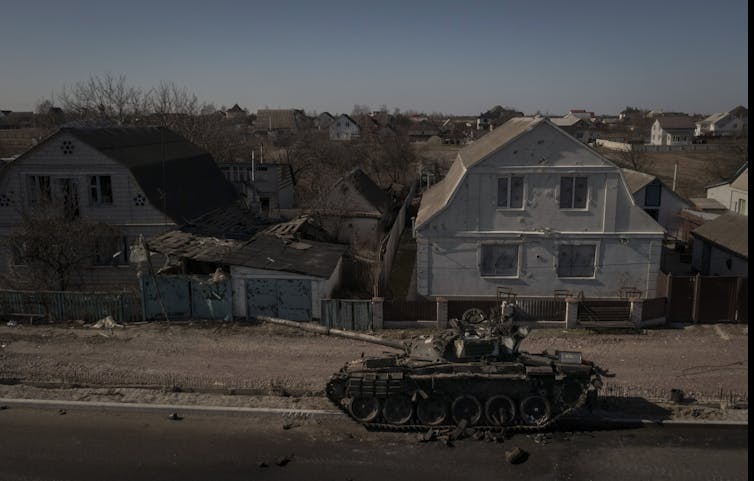
For 25 years, experts warned that the expansion of the North Atlantic Treaty Organization (NATO) was risky. The leading voice among them was the late American diplomat and historian George F. Kennan, who wrote in 1997:
“Expanding NATO would be the most fateful error of American policy in the entire post-Cold War era.”
He added it would “have an adverse effect on the development of Russian democracy,” “inflame nationalistic, anti-western and militaristic tendencies” in Russia, and “restore the atmosphere of the Cold War to East-West relations.”
The decision not to heed these warnings was a major gamble. Since 1997, NATO has expanded into 14 countries between western Europe and Russia, helping set the stage for Russia’s ongoing illegal invasion of Ukraine.
Zelensky had NATO aspirations
Ukraine is one of the few remaining eastern European countries into which NATO has not expanded. It’s the second largest country in Europe, and shares both significant history —and 2,000 kilometres of border — with Russia, as well as 1,000 kilometres of border with Russia’s close ally and neighbour Belarus.
In September 2020, Ukraine’s new President Volodymyr Zelensky approved a new national security strategy “with the aim of membership in NATO” (although it would have taken many years for Ukraine to satisfy the membership conditions).
NATO’s expansion has provided fuel for flames that leaders like Russian President Vladimir Putin are all too willing to fan in a country with very little press freedom. At the start of Russia’s invasion of Ukraine, Putin told the Russian people:
“We have been patiently trying to come to an agreement with the leading NATO countries … while the North Atlantic alliance continued to expand despite our protests …. Its military machine is moving and … is approaching our very border.”
Certainly Russia would not be permitted to expand its sphere of military influence into Central America — even if invited — let alone into Mexico, whose border with the U.S. is about as long as Ukraine’s borders with Russia and Belarus.
Read more: Why Vladimir Putin won't back down in Ukraine
Of course, Russia is an authoritarian state, especially with Putin as its president, but it is instructive to consider how any state would react to a major military rival advancing on its borders.
Gamble No. 1 — No anti-NATO tendencies
Clearly, NATO’s first — historical — gamble failed. Russia has perceived NATO’s rapid expansion as a threat, which has contributed to its drift toward anti-western nationalism, militarism and authoritarianism, dragging us into a new Cold War.
Since 2014, Russia has used deadly force and illegal annexation in southeastern Ukraine, for which it has been subject to sanctions (although they’ve been inadequate and ineffective).
In the months before Feb. 24, 2022 — while Russia staged massive troop manoeuvres near Ukraine — everyone knew that it was capable of invasion, and that its stated concerns focused on NATO’s expansion.

There were two possible scenarios.
First, Russia’s invasion posture might be a bluff to spur negotiations for a possible agreement that would exclude Ukraine from NATO in exchange for Russia guaranteeing Ukrainian sovereignty.
Second, Russia might be planning to invade at least part of Ukraine in order to secure a buffer region between itself and “NATO borders” (as NATO itself calls the borders of its member states).
Gamble No. 2 — Russia was bluffing
NATO’s second gamble was to refuse to negotiate an agreement on Ukrainian neutrality, guessing that Russia was bluffing and would back down, leaving NATO free to continue expanding. If this gamble failed — and Russia invaded Ukraine, as it did — the problem would become containment of the failure, which would require a third gamble.
If negotiations leading to possible Ukrainian neutrality had begun before Feb. 24, and Russia had invaded anyway, the situation would not be worse than it is today; if negotiations were fruitful, the situation could have been much better.
But even though NATO member-state leaders said “all options” were on the table, at least one was not: negotiations that would have genuinely considered Russia’s stated vital interest that NATO halt expansion and leave Ukraine neutral.
Indeed, negotiating Ukrainian neutrality — the option sacrificed by the second gamble — remains the only viable path to peace, and is being proposed more and more, after so much devastation.

Gamble No. 3 — War contained to Ukraine
NATO’s third gamble was that a war in Ukraine could be contained, and not escalate beyond either Ukraine’s borders or conventional warfare. As part of this gamble, NATO signalled that its member states would not intervene militarily in Ukraine.
Troops were pulled out of Ukraine and put into neighbouring NATO states, leaving Russia relatively free to pursue its military objectives within Ukraine.
Tragically for Ukraine, confining the war within its borders without direct NATO support was the goal of the third gamble. If Russian and NATO forces clash directly inside or outside of Ukraine, a much wider conflict between major nuclear belligerents could occur.
A hot war in Ukraine must be contained in order to keep the war between Russia and NATO cold. We must hope the third gamble continues to pay off.
Direct NATO involvement not an option
In the war of words, NATO has advocated strongly for its genuinely beleaguered Ukrainian ally, but it was understood all along that NATO nations entering the war in direct support of Ukraine was not a possibility.
Although the Ukrainians alone have to fight the Russians, they will make Russia pay a price because of Ukraine’s relatively strong military and nearly worldwide support for everything it needs (up to, but not including, NATO troops). NATO has given no ground, and Russia will be weakened by a long war.

Russia invaded Ukraine, egregiously violating international law and human decency, but it aims to secure at least part of Ukraine as a buffer between itself and NATO.
And Ukraine will continue to suffer — mostly at the hands of Russia, but also because of NATO’s grave miscalculations.
John Duncan does not work for, consult, own shares in or receive funding from any company or organisation that would benefit from this article, and has disclosed no relevant affiliations beyond their academic appointment.
This article was originally published on The Conversation. Read the original article.







